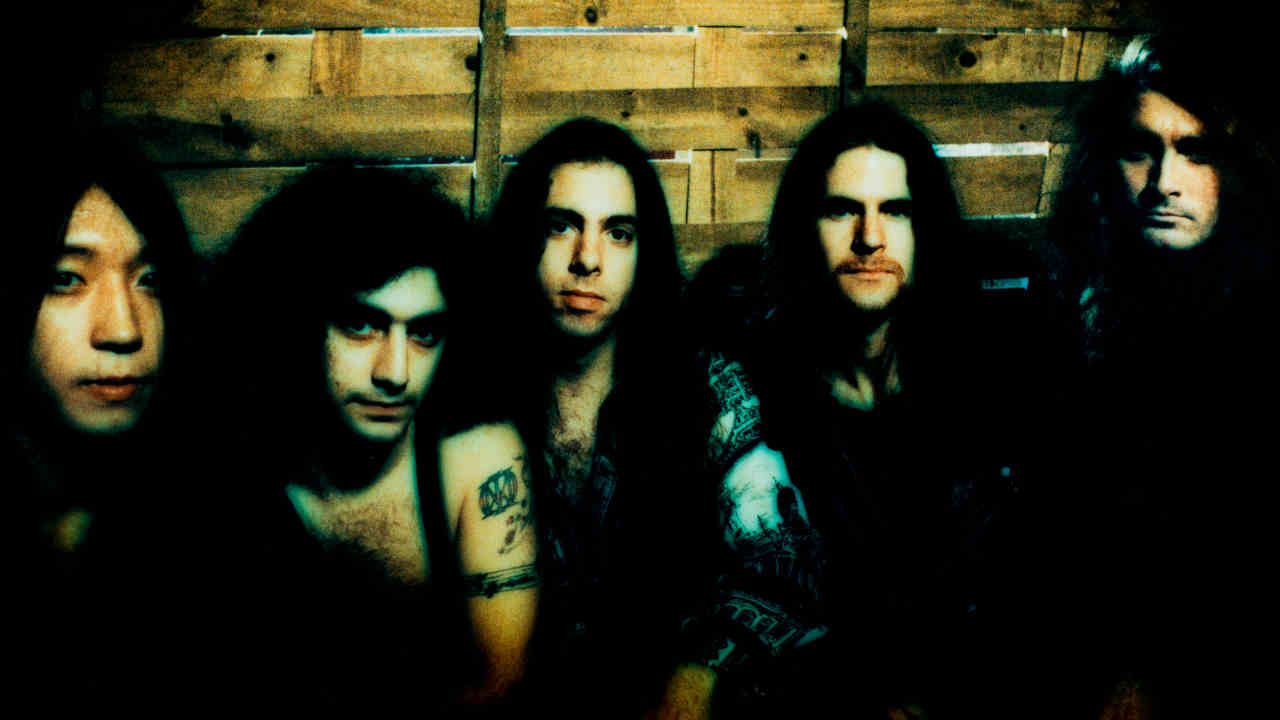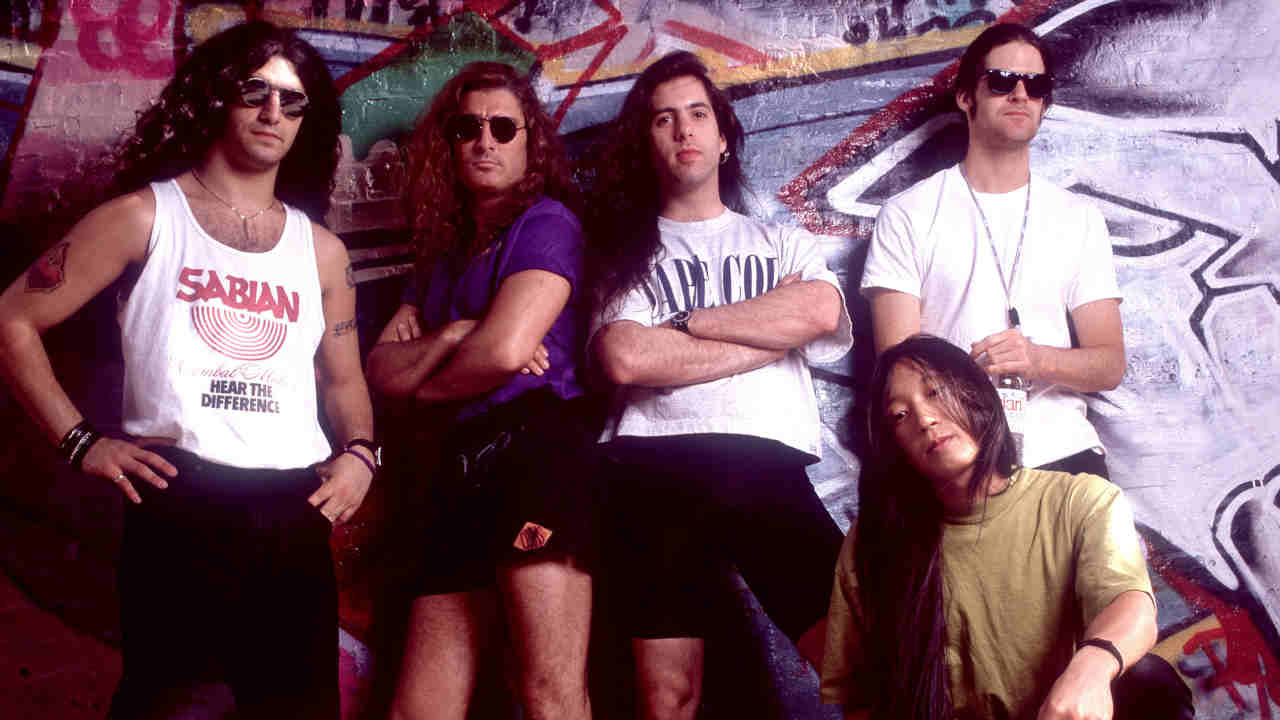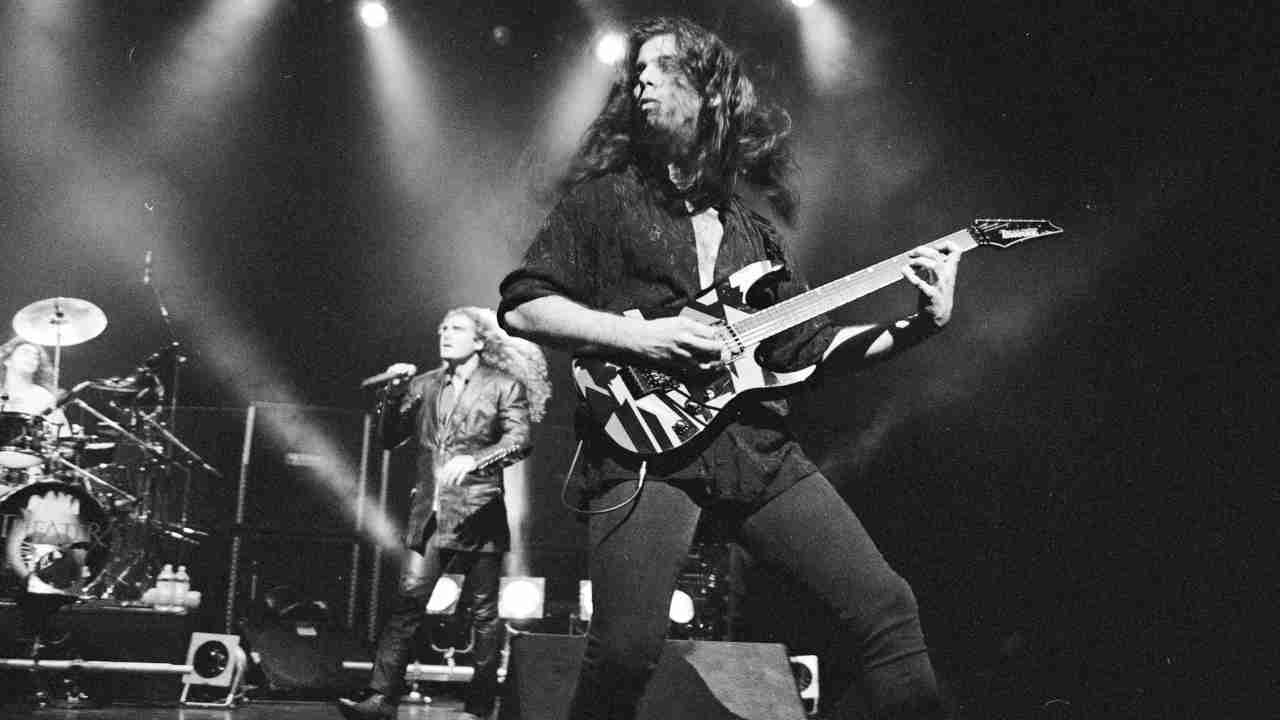
Dream Theater can legitimately lay claim to ushering in the modern prog metal era, thanks to the breakthrough success of their 1992 album Images And Words. In 2005, drummer Mike Portnoy looked back at the trials, tribulations and triumphs of a record that opened up metal’s horizons.
In the early 1990s, the words ‘progressive’ and ‘metal’ were rarely used together, and the idea of attaining mainstream success by cross-pollinating the two genres would have been laughed out of town. Queensryche’s acclaimed 1988 concept album Operation: Mindcrime wrapped its prog sensibilities up in a radio-friendly, state-of-the-art metal sound, while the likes of Texan thrashers Watchtower and Canada space-heads Voivod were too gnarly to appeal to polite ears. But there was one band who were about to crack open on the door marked ‘prog metal’, ushering in a trickle that would eventually become a torrent: Dream Theater.
“Prog had become a dirty word,” says drummer and co-founder Mike Portnoy. “Bands like Metallica, Queensrÿche and Maiden had alluded to progressive rock influences, but never fully tapped into them. Others like Fates Warning and Watchtower had done so but couldn’t quite make the breakthrough. We were the first band to truly marry metal and prog and take it to the mainstream. We really blew the doors off, and nobody’s looked back since.”
They were formed in 1985 under the name Majesty by a group of former students from the prestigious Berkelee School Of Music, renamiing themselves Dream Theater shortly before recording 1989 debut album, When Dream And Day Unite. Following that record’s commercial failure, the band spent almost two years broke and singer-less after firing former frontman Charlie Dominici. While they waited for an upturn in their fortunes, they began writing the songs that would make up their second album, Images And Words.
“It was a trying time,” says Portnoy. “And for a while we thought our first taste of the music industry might’ve been our one and only shot. But we stuck to it because we’d written the songs that ended up on that album, most of which went on to become classics to our fans in later years.”

Things began to change for them when they signed to Atlantic Records offshoot Atco. However, their new label was unhappy with new vocalist James LaBrie – recruited after an arduous audition process that involved trying out 200 people – and pushed the band to hire a different frontman. That was a battle Dream Theater won, but had to compromise on Atlantic’s choice of producer. The label insisted they go with David Prater, who had produced featherweight rock bands Firehouse and Diving For Pearls. As a former drummer with Santana, Prater was at least able to talk to Dream Theater in the same musical language, though tensions would soon grow between the band and the producer.
At least the band had written a set of songs that married their virtuoso abilities to some impressive tunes. Pull Me Under, the track that would eventually open Images And Words and give Dream Theater their breakthrough hit, was inspired by Shakespeare’s Hamlet, while Metropolis – Part 1 (The Miracle And The Sleeper) is supposedly based on the story of Romulus and Remus, the mythical founders of the city of Rome. Other songs were rooted in more real world concerns: Learning To Live had an AIDS-related theme, and Take The Time gave voice to the frustrations of the previous two years. Unfortunately for Dream Theater, those frustrations would resurface during recording sessions at New York’s Bear Tracks studio.
“Making Images And Words with David Prater was a complete fucking nightmare,” Mike sums up. “Dealing with this asshole was torturous. We were incredibly thrilled to finally have a singer and record deal and be back in the studio again, but little did we know that another rollercoaster ride was ahead of us.”
Dream Theater and Prater butted heads right from the off, with the band accusing him of diluting their complexity with his “pop-metal mentality”. Despite the acrimony, Portnoy does reluctantly acknowledge the producer’s role.
“We were writing music that sounded like Metallica jamming with Yes or Rush, so somebody had to provide that push towards the mainstream or it might’ve disappeared into oblivion,” he admits. “As much as David Prater is one of my least favourite human beings on the planet, I have to give him credit for that.”
Another huge bone of contention now viewed with hindsight was Atco Records’ unswayable vetoing of what Dream Theater felt was their strongest song, the epic prog-opera A Change Of Seasons. The 22-minute, seven-part masterpiece meant more to Portnoy than anyone else, as its lyrics were inspired by the grief of his mother’s death. But the label refused to allow it to be on the album.
“We got the phone call about that song being canned on our very first day in the studio and it was a hard pill to swallow,” Mike sighs at the memory. “It was a sour way to start the session. But once again, maybe it turned out to be the right decision because had it been included it would’ve made the album 70 minutes long, and although it’s now commonplace, few bands did that back in 1992. It might’ve been a little too much for people to digest.”
There were further behind-the-scenes shenanigans. Unknown to the band, Atco wanted to replace James LaBrie with another singer, Robert Mason. “Their idea of replacing James was something we only found out years later,” Mike laments. “The management, the label – everyone was trying to dip their hands into the pie. That’s the kind of conniving shit that breaks bands up, and it’s something that would never, ever happen to us now.”
There were further ructions between the band and their producer. According to the band, a punch-up was only narrowly averted after Prater allegedly wiped tapes of keyboard player Kevin Moore’s parts, accusing him of playing the parts incorrectly.
Despite that, Images And Words was finally completed without any blood actually being spilled and released in July 1992. Timing-wise, they couldn’t have picked a worse moment to put out an album of top-level musicianship, intricate and intelligent arrangements and soaring vocals - something grunge was supposed to have killed off. Inevitably, many reviews weren’t kind. One critic claimed to “appreciate the expertise but deplore the end result.” Another wrote that the album would “do for progressive rock what Nirvana have done for smelly cardigans” – a back-handed compliment if ever there was one. The fact that Dream Theater’s live show included an extended solo spot for each musician was further fuel to the haters’ fire. Today, Portnoy views that as a badge of honour.
“We’re often accused of being indulgent,” Portnoy says breezily. “But we’re about solos and epic songs – all the things that the critics hate about us are what makes our fans love us.”
Doubtless to the critics’ chagrin, the fans really did love them. Against the odds, radio picked up on an edited version of the eight-minute Pull Me Under. A second break came when the band were invited to support Iron Maiden on some shows on the latter’s Fear Of The Dark tour.

“We didn’t write Pull Me Under as a single and never in a million years did we think it would make an impression like that, which is maybe why it succeeded,” says Portnoy. “Opening for Maiden was a dream come true. They were one of our biggest influences. and it was really exciting.”
Both of these factors helped push Images And Words towards the half-a-million sales mark – almost unthinkable at the time, given its complexity, heaviness and utter distance from everything else that was popular at the time. Against the odds, Dream Theater were stars.
“Back then we signed our fair share of girls’ tits, but it was their boyfriends that really paid attention to us,” says Portnoy of the band’s initial brush with fame. “And after shaking off a very short spell of MTV attention, our audience again became made up of computer nerds, musicians and prog fans. But they’ve stayed with us for the long haul.”
Despite the painful circumstances of recording it, Images And Words provided the launchpad Dream Theater needed. Pull Me Under may have been the closest they’ve come to having an actual hit single, but their subsequent albums cemented them as the leaders of the modern prog metal movement, maintaining the balance between commercial success and musical boundary-pushing. For Portnoy, helping to popularise this most unlikely of genres remains one of his proudest acheivements.
“The album’s songs are timeless, but of course I have issues with the production,” Mike concludes through gritted teeth. “Overall though, Images And Words was important for us and many others. Bands ranging from Opeth to Avenged Sevenfold have cited it as being an influence on them, opening the floodgates for Mastodon, Porcupine Tree, Tool and The Mars Volta. It was really the start of something big.”
Originally published in Metal Hammer 158. Since then, Mike Portnoy has left and rejoined Dream Theater







